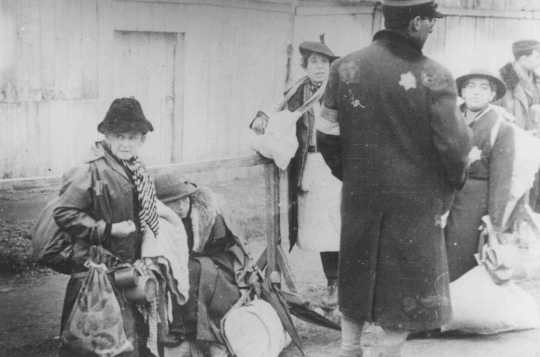
Luxembourg
German policies varied from country to country, including direct, brutal occupation and reliance upon collaborating regimes. Germany occupied Luxembourg in May 1940. Estimates of the total number of Luxembourg Jews murdered during the Holocaust range from 1,000 to 2,500.
Luxembourg, in northwestern Europe, is one of the world's smallest countries. It is bordered by France, Belgium, and Germany.
Germany occupied Luxembourg in May 1940.
After the occupation, the Grand Duchess of Luxembourg and her government fled to Great Britain. Following a period of military administration, the country was placed under a German civil administration headed by Gustav Simon, district head of the adjoining German province of Koblenz-Trier. In August 1942, Germany formally annexed Luxembourg.
Before the war, over 3,500 Jews lived in Luxembourg. A majority of them had emigrated from eastern Europe. In addition, over 1,000 German Jewish refugees found shelter in the tiny duchy. The Nuremberg Race Laws were introduced in Luxembourg on September 5, 1940, followed by several other anti-Jewish ordinances. In practice, however, Jews were encouraged to leave the country. From August 8, 1940, until the Germans forbade emigration on October 15, 1941, more than 2,500 Jews left Luxembourg, mostly for the unoccupied zone of France. Many of these Jews were later deported from France to killing centers in occupied Poland.
German authorities interned about 800 remaining Jews in the Fuenfbrunnen transit camp near the city of Ulflingen in northern Luxembourg. Between October 1941 and April 1943, 674 Jews were deported from Fuenfbrunnen in eight transports to Lodz, Auschwitz, and Theresienstadt.
Only 36 Jews from Luxembourg are known to have survived the Nazi camps. Estimates of the total number of Luxembourg Jews murdered during the Holocaust range from 1,000 to 2,500. These figures include those killed in Nazi camps, in Luxembourg, or after deportation from France.
Critical Thinking Questions
- Learn about the history of the Jewish community in Luxembourg.
- How can societies, communities, and individuals reinforce and strengthen the willingness to stand up for others?
- What was the relationship between the progress of the war and the mass murder of Europe’s Jews?